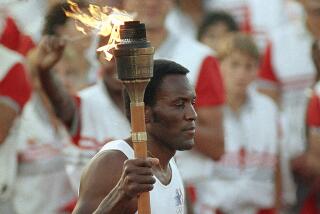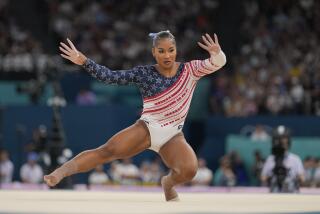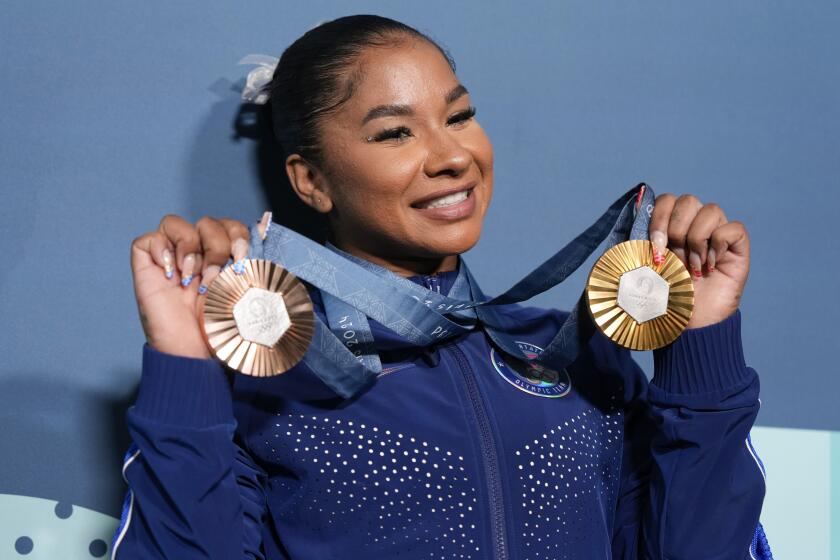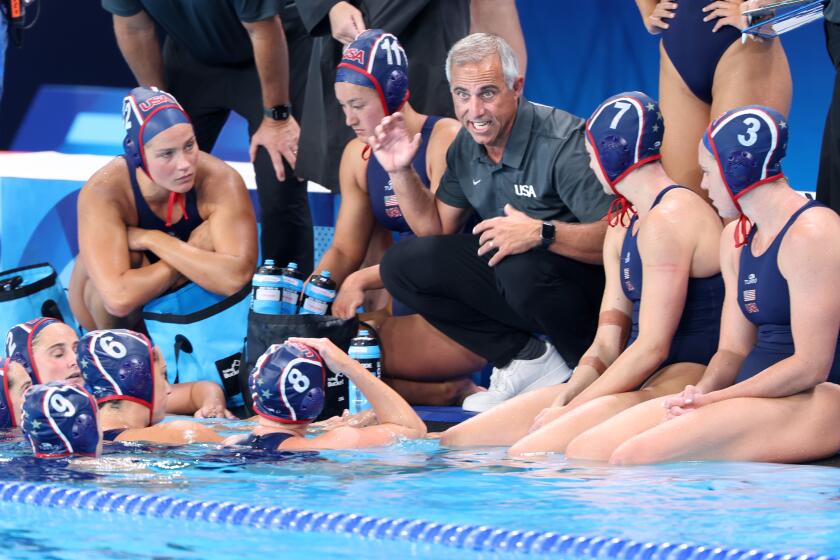Lolo Jones faces familiar hurdles as Olympic bobsledder
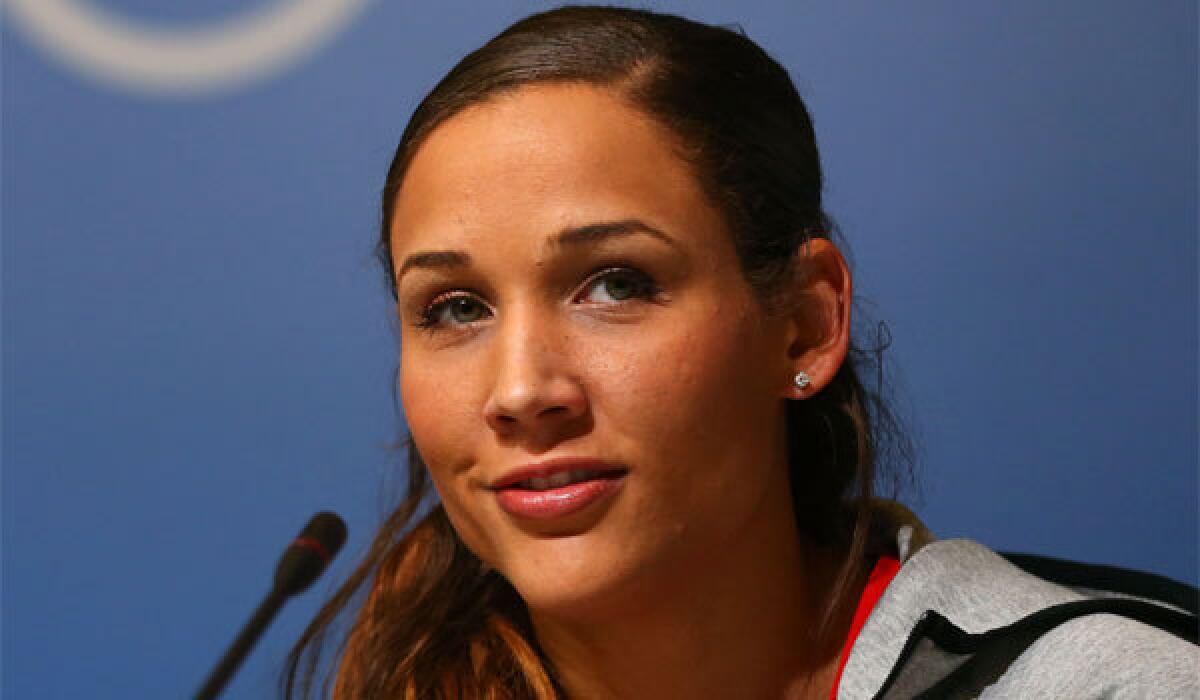
SOCHI, Russia -- Lolo Jones began to cry Monday while talking about how U.S. women’s bobsledders immediately had embraced her after what she described as having been thrown under the double-decker bus by her track and field teammates at the 2012 London Olympics.
The temptation is to think they were crocodile tears, just another example of Jones cleverly managing her image to raise a profile already so high many think it is the reason she made the 2014 Winter Olympics team as a sled pusher.
To critics, this was a case of USA Bobsled simply wanting to piggyback on the attention that has followed Jones since she lost the high-hurdles gold medal at the 2008 Olympics by stumbling over the penultimate hurdle. That attention increased four years later when she used Twitter to reveal her virginity, then turned decidedly from fame to notoriety when the U.S. hurdlers who won silver and bronze medals in London complained that Jones got more acclaim for finishing fourth.
It is part of why two of the other Olympic sled-pusher candidates, Emily Azevedo and two-time world medalist Katie Eberling, felt the federation had thrown them under the bus in its selection procedures.
Eberling, in Sochi as an alternate, said she could not understand why she had no chance this season to race with No. 1 driver Elana Meyers. Azevedo told USA Today that she should have spent more time getting Twitter followers, with just 2,143 to Jones’ 377,150.
“I honestly wish Twitter followers would have given me the spot,” Jones said. “That means I would have been guaranteed one for real.”
Race results and start times showed Aja Evans the clear No. 1 among the sled-pusher candidates. The numbers also made three-time Olympic sprinter Lauryn Williams relatively solid after just seven months in the sport. Jones was closest to the bubble.
“It was more like a funeral when the announcement was made,” Williams said. “You wanted to be happy for yourself but you knew how hard the others worked. To see them show their hurt in a way that also hurt someone else was a very tough pill to swallow. Hopefully everyone can move past that hurt.”
Said Evans: “We all deserve our spots 110 percent.”
Williams, an Olympic silver medalist and world champion in the 100 meters, credited Azevedo for having been “my best teacher.” Meyers had been Eberling’s roommate on the bobsled circuit the past two years, and they won world silver and bronze medals together.
“[Katie] has been my stalwart,” Meyers said. “I cried when she didn’t make the team.”
Still, Meyers was first to mount a public defense of the push-athlete choices, made by a selection committee that considered not only statistics but driver input. She said Eberling’s numbers weren’t as good as they had been in the past.
“It was an unfortunate time not to be at the top of your game,” Meyers said.
To the question of why Eberling got no rides in her sled, Meyers answered, “We were trying to see what she could do in the other sleds.”
Jones said she cannot understand why being popular, in terms of both name recognition and social media presence, should be held against her.
“You are taught when you do media stuff to be charming, to answer the questions, to be genuine,” she said. “I don’t know how that comes across as being negative so people will try to use it against you, like, ‘Oh, she has too many Twitter followers, so now we hate her.’ When I had 1,000, you wanted me to be outspoken and show you who I am.’’
Jones said she thinks the controversy has caused an even tighter bond among the female bobsledders. The evidence of that, she said, includes having Meyers and Evans speak out in support of the selection.
There will undoubtedly be more controversy if Jones winds up in USA I or even in driver Jamie Greubel’s USA II sled when the driver-pusher pairings are announced Thursday. Such a move could be seen as manipulation to give Jones a better chance at a medal.
The push athlete’s role essentially ends when she jumps into the sled about six seconds after the start. From then on, the pusher tries to avoid any body movement that would upset the driver’s line.
“We are just speed and pushing the sled,” Jones said. “There are some technical aspects to it, but we aren’t driving.”
That Jones and Williams were able to become Olympic pushers so quickly suggests that any good athlete could do it.
“I think people forget me and Lauryn were top athletes in the world in our [previous] sport,” Jones said. “It’s not like they were just recruiting Joe Schmo off the street.’’
Meyers recruited Jones, and bobsledding became a way for her to get out of a post-London funk.
“It gave me a fresh start, for sure,” Jones said.
More to Read
Go beyond the scoreboard
Get the latest on L.A.'s teams in the daily Sports Report newsletter.
You may occasionally receive promotional content from the Los Angeles Times.
